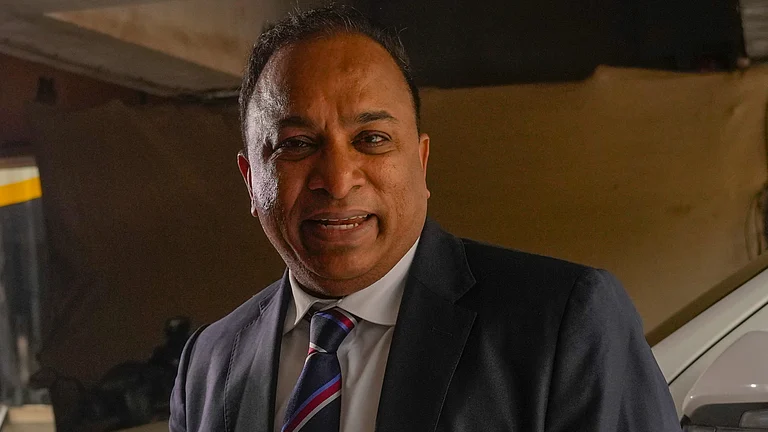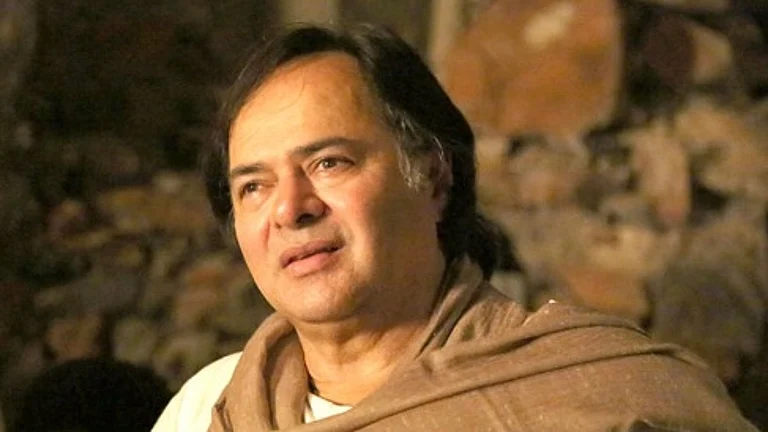Jaswant Singh Gill, 77, has been leading a quiet, retired life in Amritsar for many years. That might change, for Bollywood has of late stumbled upon his extraordinary life story, which it wants to recreate on screen. That particular episode of true grit from the retired engineer’s life, sounds so exciting as to spur a race between Akshay Kumar and Ajay Devgn for acquiring rights for a biopic.
As a mining engineer with the Central Coalfields Ltd, Gill had risked his life to rescue 65 miners trapped in a flooded mine at Mahabir Colliery of the Eastern Coalfields Limited in West Bengal in November 1989—a remarkable feat that prompted Chile (in 2010) and other nations to follow his rescue model in times of similar disasters.
Regardless of who ultimately makes a movie on Gill, the dash among top stars certainly underscores the film industry’s current pre-occupation with real life stories with a potential to deliver blockbusters. Apparently faced with a dearth of fresh subjects, coupled with the recurring failure of formulaic ventures, B-town is desperately latching on to biopics as a potentially enduring recipe for success. From former prime ministers and a famous astronaut to the first Indian Olympic bronze medallist and the sister of a fugitive don, just about anybody appears to be worthy of a full-fledged feature film in this new scheme of things.
Bollywood analysts, however, look at the phenomenon as a natural corollary to film-makers’ inability to hit upon fresh plots. Film writer Vinod Anupam says that the Hindi film industry fights shy of working on new scripts and is always on the lookout for readymade subjects. “Biopics make it rather convenient for them to choose subjects,” he says. “Hollywood and the Iranian film industry may work on a script for four to five years, but Bollywood has neither the time nor inclination. They cannot conceive any character like Geeta Phogat of Dangal; they prefer to find her from among real-life people for sheer convenience.”
The digital revolution, plus the proliferation of news channels, says Anupam, have whetted the curiosity of the average cine-goer, who is often a television junkie. “He is curious in knowing in details about anybody he finds interesting. That is the reason why a biopic on Milkha Singh came about after all these years,” he points out.
Anupam has a point. Post Dangal (2016), Bollywood’s focus is not necessarily on life stories of celebrities, but also on lesser, inspiring mortals. Akshay is already doing a movie, Padman, based on the life of Arunachalam Muruganantham, a small-town crusader from Tamil Nadu who invented cost-effective sanitary napkins to generate awareness about menstrual hygiene.
Known to have had an eye (and a nose) for such ventures, Akshay had earlier played Ranjit Katyal, who helps evacuate thousands of stranded Indians from Kuwait in the wake of the Gulf war in 1990, in last year’s mega hit, Airlift. Katyal’s character was, of course, based on a first-generation NRI, Matthunny Matthews, who passed away recently. In Rustom (2016), Akshay reprised the role of naval officer K.M. Nanavati, whose trial in the murder of his wife’s paramour, had held the nation in thrall in the late 1950s.

The ‘master of biopics’ has already started work on two such movies—one on music baron Gulshan Kumar and another on legendary hockey player Balbir Singh. In Mogul, Akshay will play Gulshan Kumar, who had revolutionised the music industry with cheap cassettes from his company, T Series, before being killed by the mafia. In Gold, he will portray Balbir Singh, a member (and later captain) of the hockey team that won three consecutive gold medals in the Olympics (1948, ’52, ’56) after Independence.
The current surge in biopics, of course, comes close on the heels of the phenomenal global success of the Aamir Khan-starrer, Dangal. It depicts the little-known story of former Haryana wrestler Mahavir Singh Phogat, played by Aamir, who grooms his daughters, Gita and Babita, to become champion wrestlers in the face of near-insurmountable social barriers. Aamir is now all set for another biopic, Salute, about astronaut Rakesh Sharma, the first Indian to go into space, in a Soviet space vehicle.
But Dangal isn’t the trend-setting Bollywood biopic, so to say. In recent years, several films trod the lives and times of notables—southern siren Silk Smitha (The Dirty Picture/2011), athlete-turned-bandit Paan Singh Tomar (Paan Singh Tomar/2012), lawyer-activist Shahid Hashmi (Shahid/2013), Pan Am purser Neerja Bhanot (Neerja/2016), Indian prisoner held in Pakistan Sarabjit Singh (Sarbjit/2016) and gay professor Ramchandra Saras (Aligarh/2016). Almost all earned acclaim, if not similar footfalls. Still, there is no denying that Dangal’s astounding success has forced film-makers and actors to explore biopics as a genre with immense possibilities.
Fresh from Kaabil’s success, Hrithik Roshan has just signed a movie based on Bihar-based mathematician Anand Kumar, whose pioneering coaching INStitute, Super 30, earned global acclaim for grooming 30 underprivileged students for admission into the Indian Institutes of Technology every year. To be directed by Vikas Behl (Queen, 2014), it will go on the floors this year. Ranbir Kapoor, who, like Hrithik, is new to biopics, is already plunged headlong into one on fellow actor Sanjay Dutt, being directed by Rajkumar Hirani.
Over the years, there has been sharp criticism over the failure of some film-makers to do justice to their projects. While some consciously skirted controversies linked inextricably to the themes, others interpolated fictional elements to pander to the box office. Anupam Kher is now playing Manmohan Singh in a biopic based on The Accidental PM: The making and Unmaking of Manmohan Singh by former media advisor Sanjaya Baru, while Madhur Bhandarkar is directing Indu Sarkar, about the 1975 emergency imposed by Indira Gandhi’s government. It will be interesting to see how these films will tackle the controversies of their real-life characters.
Anand Kumar of Super 30, for one, is hopeful that director Vikas Behl and actor Hrithik Roshan will do justice. “I am extremely happy that a star-actor of Hrithik’s calibre has agreed to do the film,” Anand tells Outlook. “I have seen some of his films. Hrithik is a fine actor.”
Anand, who used to sell papad on the streets of Patna before earning global acclaim, says he and Hrithik might sit together soon to discuss his charcaterisation in the film.
In recent times, Bollywood has also shown a flair for biopics on sports personalities, such as Mary Kom (2014), Azhar (2016), Bhaag Milkha Bhaag (2013), M.S. Dhoni: An Untold Story (2016) and Sachin: A Billion Dreams (2017) have hit screens in quick succession. While some, like Dhoni’s biopic, hit the box office jackpot, others like Azhar came a cropper. But their mixed fortunes have not deterred film-makers. Already, films on hockey legend Dhyan Chand, badminton star Saina Nehwal and even the long-forgotten wrestler, K.D. Jadhav, the first individual Olympic medal-winner for India, are being made.

In the past, it was mostly the cinematic real lives of bandits and gangsters that used to INSpire film-makers. Yash Chopra’s iconic Deewar (1975) had shades of former smuggler-don Haji Mastan’s life, while Feroz Khan’s Dayavan (1988), based on Mani Ratnam’s Tamil original, Nayakan (1987), portrayed underworld don Varadarajan Mudaliar. In 1994, Shekhar Kapoor made Bandit Queen, on the life and times of dacoit-turned-politician Phoolan Devi.
Such glamorised, lawless characters have not completely gone out of vogue, though. This year, Shahrukh Khan’s Raees was based on Gujarat liquor mafia don Abdul Latif, while Arjun Rampal’s upcoming venture, Daddy, portrays him as mobster-turned-politician, Arun Gowli. Besides, Shraddha Kapoor is playing Haseena Parkar, fugitive ganglord Dawood Ibrahim’s sister, in an upcoming movie, Haseena.
Bollywood watchers believe that the trend of biopics is unlikely to discontinue. “I do not see the Hindi film-makers showing interest in working on fresh stories. They will continue to find easy subjects. They will either depend on biopics or make movies on some real-life incident,” says Vinod Anupam.
Trade expert Atul Mohan from Complete Cinema, however, says that it is not that easy to make a biopic, since a film-maker has to careful enough not to distort facts. “Biopic is an interesting genre. Everybody wants to know about the struggle behind a success story,” he says. “Of course, cinematic liberties can be taken, as it happened in case of Bhaag Milkha Bhaag and the Dhoni biopic, otherwise it will end up being a dull and drab documentary.”
Mohan says that films are made primarily for entertainment and just any biopic will not run, if it is bereft of the requisite twists and turns, terrible reverses suffered and amazing coincidences and bursts of luck that make for an enjoyable plot. The same, of course, holds true for any hit movie.


























